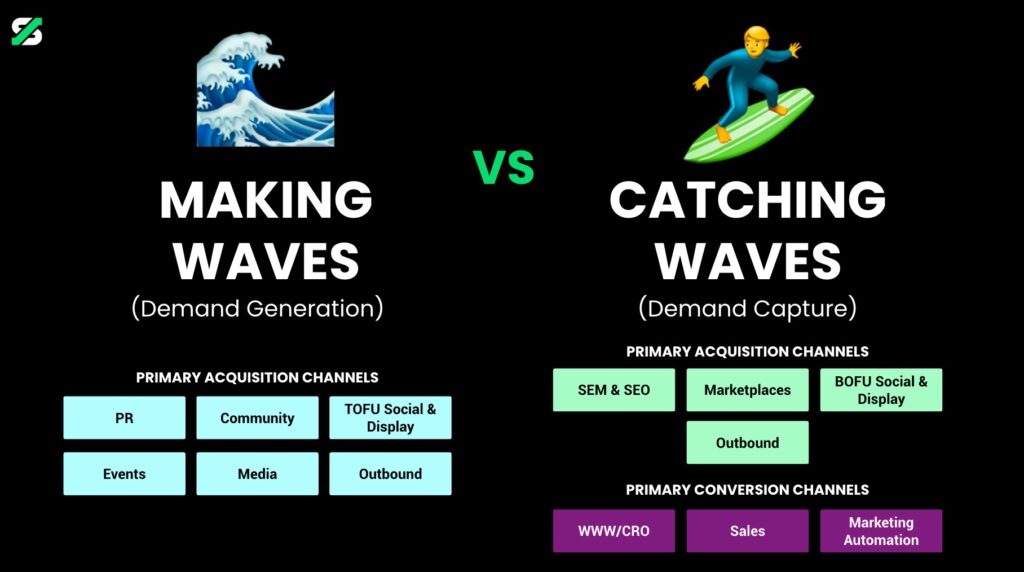Startups often fall into one of two categories: those exceptional at making waves and those that excel at catching waves. The former captivate the media by evangelizing their innovations, while the latter are revenue machines, capitalizing on existing market demand. The optimal strategy incorporates both, laying the foundation for sustainable growth.

Making waves involves generating fresh demand. By targeting individuals in your Ideal Customer Profile (ICP) who aren't actively seeking your solution, you educate them about your offering and potentially even the problem they didn't know they had. This strategy requires a distinct skill set centered on storytelling, content creation, and relationship-building.
Catching waves is about capturing pre-existing demand. It ensures that those in the market for your product can easily find you and engage in a seamless transaction, often via your website or sales team. This approach demands expertise in channel-specific knowledge, along with strong analytical and technical skills.
Here is my recipe for prioritizing demand capture vs demand generation:
In all scenarios, the objective is to create a diversified, effective channel mix that ensures both rapid and sustainable growth
Omnipack: Since we began working with Omnipack in 2017, the company's ARR has grown from zero to over $12M. Initially, we focused on pure demand capture: Google Ads targeting transactional phrases to drive traffic to a landing page featuring an interactive form. Leads were then processed by their sales team. Although we experimented with social ads and outbound marketing, these channels were not as successful as SEM at the time. As the company scaled, it diversified its strategy, incorporating many demand-generation activities via channels like SEO, events, partnerships, content, and PR.
Pomelody: Already skilled in demand generation with vibrant communities on social platforms, they lacked in demand capture. We used Meta Ads to drive traffic from their communities, warmed by timed discounts, and converted them through a newly-created e-commerce platform. Results included breaking even at 64k PLN (circa $15k) in the third month and reaching 400k PLN (circa $95k) by the fifteenth month.
By mastering both making and catching waves, startups can position themselves for both immediate and long-term success.